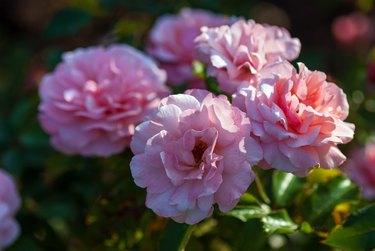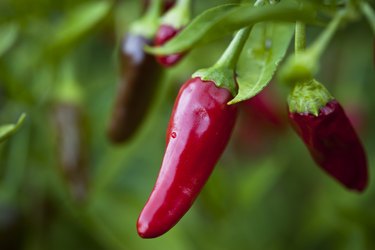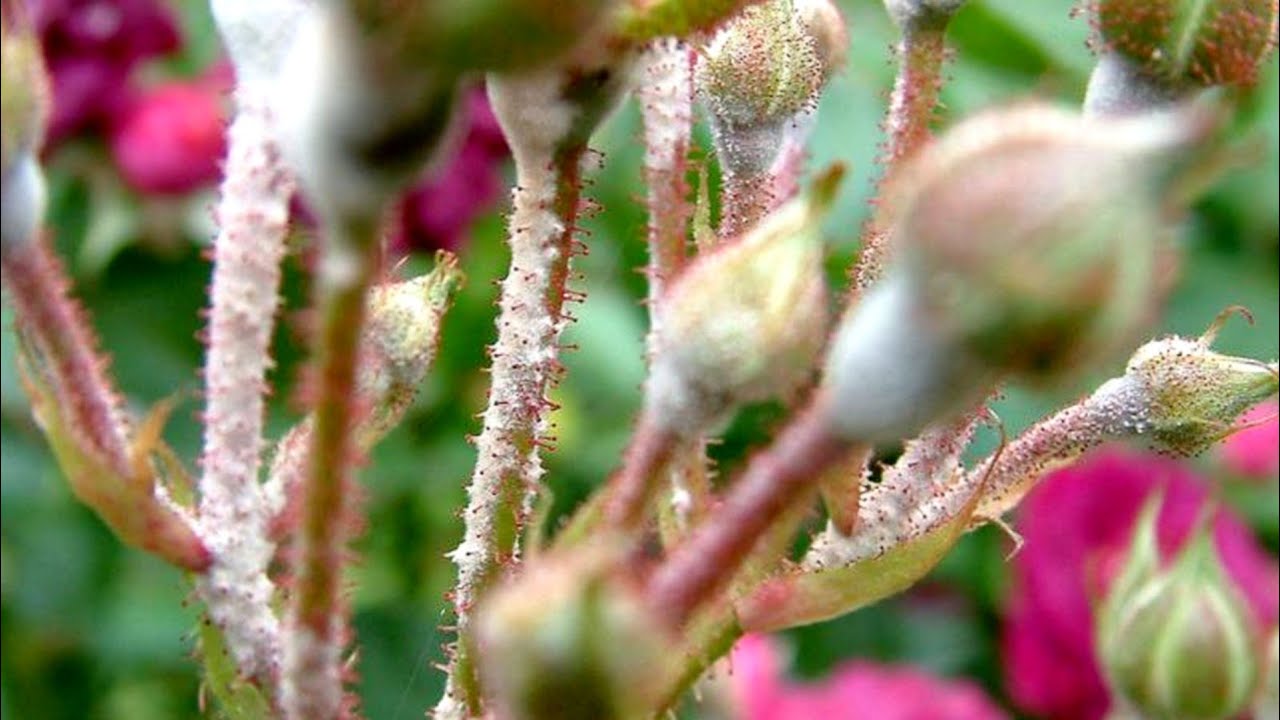Having white spots on your rose bushes can make your garden look bad even though the bushes are otherwise pretty. Roses (Rosa spp. ) are some of the most popular flowers to grow in your own garden, but they can get a lot of diseases and pests. These problems with roses range from annoying aesthetic issues to serious problems that can kill the rose bush. As soon as you see white spots on rosebushes, look at the other signs to figure out what’s wrong and start treatment right away.
As a rose gardener, few things are more frustrating than walking out to your prized rose bushes only to discover the leaves are speckled with peculiar white spots. These blemishes can appear overnight, marring the beauty of the roses and leaving you puzzled as to the cause.
While alarming, white spots on rose leaves are usually harmless and can be effectively managed with some diligent care Read on to get to the root of what’s behind those white specks, and what you can do to restore the health and vigor of your roses
Common Causes of White Spots on Roses
There are a few usual suspects when it comes to mysterious white speckles on rose foliage:
Powdery Mildew
The most common culprit is powdery mildew, a fungal disease that thrives in warm, humid conditions. It coats the leaves in a telltale white, powdery film that may spread across the entire leaf surface.
Left untreated powdery mildew can stunt growth and ruin the aesthetics of roses. It tends to crop up when daytime temperatures are warm coupled with cool damp nights.
Pest Damage
Tiny sap-sucking bugs like aphids, thrips and spider mites can all cause white stippling on rose leaves as they feed. Heavy infestations will lead to yellowing, curling and premature leaf drop.
Chemical Damage
Using too much fertilizer or spraying toxic chemicals can burn the tender new growth of roses. This appears as white spots with brown edges, usually clustered near the tips of leaves.
Hard Water Deposits
Water droplets containing minerals left behind after irrigation or rain can leave dusty white residues on foliage. This is especially common with overhead watering methods.
What to Do About White Speckled Leaves
Once you’ve determined the likely cause, you can take action to clear up those unsightly white spots and restore the health of affected roses.
Treating Powdery Mildew
-
Improve air circulation and light penetration by selective pruning.
-
Water early in the day so leaves can dry out. Avoid wetting foliage.
-
Apply fungicidal soap or neem oil to inhibit fungal growth.
-
Spray with baking soda, milk or garlic mixtures to change leaf pH.
-
Apply sulfur or potassium bicarbonate to kill active mildew.
-
Remove and destroy severely infected leaves.
Eliminating Pest Damage
-
Knock aphids and mites off with a strong spray of water.
-
Apply insecticidal soap or horticultural oil to suffocate and kill bugs.
-
Release beneficial insects like ladybugs and lacewings to feed on pests.
-
Apply neem oil to deter feeding and act as an insect growth regulator.
-
Remove badly damaged leaves and discard to prevent reinfestation.
Correcting Chemical Damage
-
Leach soil with copious watering to flush out excess salts and chemicals.
-
Switch to a more balanced, slower release fertilizer to prevent burn.
-
Apply compost tea or fish emulsion to help damaged tissue recover.
-
Rinse leaves to remove chemical residues.
-
Provide partial shade if leaf scorch is severe until new growth appears.
Removing Hard Water Spots
-
Use rainwater or distilled water instead of tap to avoid mineral buildup.
-
Wipe leaves with a damp cloth to physically remove deposits.
-
Apply chelated foliar sprays to prevent spotting.
-
Increase air circulation and avoid overhead watering.
-
Group roses near acid-loving plants like azaleas to lower soil pH.
Preventing White Speckles on Roses
Once you get those pesky white spots under control, be proactive to stop them from returning next season:
-
Select resistant rose varieties like KnockOuts.
-
Prune for open structure and maximum air flow.
-
Space plants appropriately and remove nearby weeds.
-
Water at the base, not from overhead.
-
Apply preventative fungicides and insecticidal soaps.
-
Avoid excess nitrogen fertilization.
-
Monitor for pests and treat quickly.
-
Test soil pH and amend accordingly.
-
Use soaker hoses or drip irrigation.
-
Plant in sunny, well-draining locations.
Don’t Let White Spots Ruin Your Roses
While white specks on rose leaves may be unsightly, rest assured they can be conquered with some TLC. Adopt proactive care habits to avoid issues popping up in the first place. Your reward will be healthy, vigorous roses gracing your garden with beautiful blooms.
Handling Anthracnose on Roses
Anthracnose thrives in cool, humid conditions. The disease can live through the winter in sick plant matter, so it’s important to clean up your garden every year to stop the spread of diseases. The spores can be spread to new plant tissue by wind or rain. They usually get in through plant damage or holes.
Prune out any canes that show signs of anthracnose and destroy the debris. Sanitize the pruning equipment before making each cut to keep it from spreading. Fungicides that contain copper and sulfur may be effective in getting anthracnose under control in your rose garden.
You can reduce the risk of infection by keeping the rose plants healthy and strong. Prune them regularly to allow for good air circulation throughout the plant. Water rose bushes at the base to keep the leaves dry, which reduces the risk of fungal growth.
Powdery Mildew on Roses
Powdery mildew often affects rose bushes. It may happen at any time, but most often when it’s warm and dry during the day and cool and damp at night. Roses growing in shady areas are particularly susceptible to powdery mildew. This disease often starts at the top of the plant and can spread through the wind.



Video of the Day
This fungal disease forms a grayish-white powder that may look like spots of white. The powdery substance most often grows on the new growth, especially leaves, shoots and buds. It can also distort new leaves, causing some leaves to drop off the plant. Flower buds might not open, and powdery mildew can affect the quality of the roses that do open.
Prevention starts with the type of roses you choose. Some varieties are resistant to powdery mildew. If you spot powdery mildew taking hold, prune the rose bushes to remove the diseased parts.
Sanitize your pruning shears before making each cut to prevent spreading any disease pathogens to healthy parts of plants. Destroy the removed plant parts to keep the fungal disease from spreading. Applying fungicide to new growth, which is most susceptible, can also protect against powdery mildew.
Rose leafhoppers are insect pests that can cause white spots on roses. They feed on the roses, causing small white spots on upper leaf surfaces. Sometimes, the small white stippled areas take over and cause larger white spots on the leaves. On the bottom of the leaf, you might notice white cast skins left behind when these insects molt. Severe infestations can lead to brown leaves that fall off.



Small infestations might not cause much damage to your roses. If there are a lot of rose leafhoppers, use insecticidal soap to kill them in a less harmful way that won’t hurt most beneficial insects. Spray the plant completely with the insecticidal soap. You might need to reapply the treatment weekly or biweekly to get rid of all the leafhoppers.
The fungal pathogen called Sphaceloma rosarum causes anthracnose, a disease that can cause white spots on your roses. It most often affects hybrid tea roses, old-fashioned climbing roses and rambler roses. The spots will show up on the leaves of your rose bushes. They usually start out as red, brown, or purple dots. The centers of those dots often turn gray or white with dark red or brown around the edges. Rose bush leaves can sometimes turn yellow, die, and fall off, and the canes can get sores called cankers.
Rose Slugs – What’s Eating your Rose Leaves? Identify & Organically Treat Rose Slugs/Sawfly Larva
- The Ultimate Guide to Growing Strawberries in Raised Beds - August 8, 2025
- No-Dig Garden Beds: The Easiest Way to Grow a Beautiful Garden - August 6, 2025
- How to Protect and Preserve Wood for Raised Garden Beds - August 6, 2025

